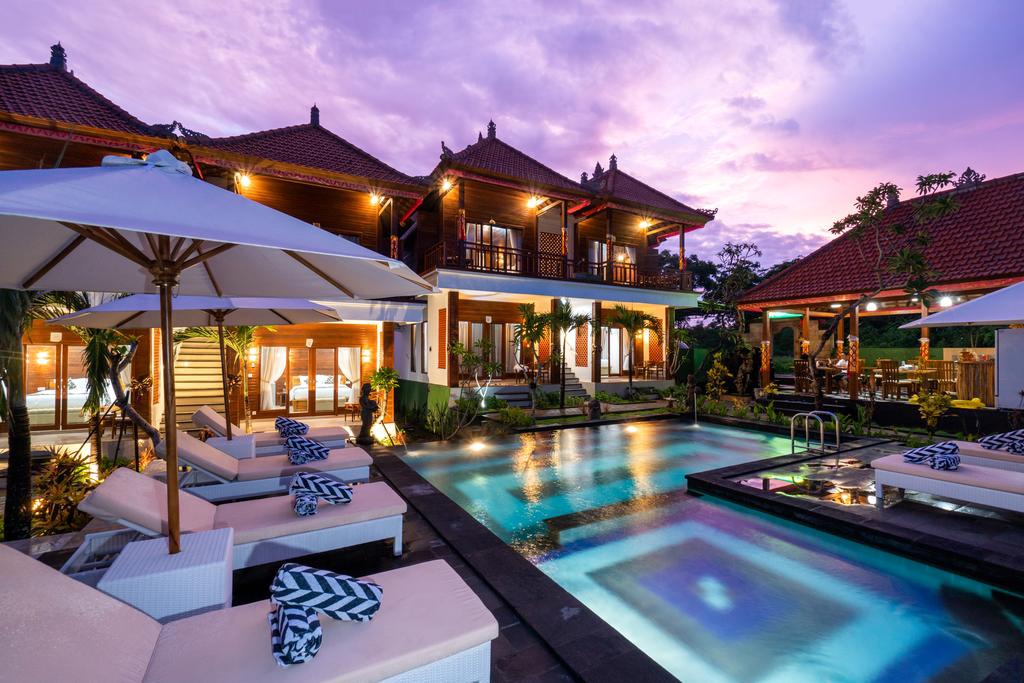Most people can tell the difference between an attached home and a single-family home, but what is a villa? The word can be perplexing. Villas were once sumptuous residences erected by affluent Romans during the Roman Empire. They would frequently be spread out over multiple storeys, with dozens of beds and a separate swimming pool. Villas are often far more modest affairs in today’s real estate market. We’ll delve deeper to see the distinguishing features of a villa as compared to other house settlements.
What is a Villa?
A villa is a one-story building home with an external patio and a front garden or terrace. They can be attached to a nearby villa or have at least one common wall.
Villas have a long history dating back to the Roman Empire. In fact, these houses are known as “Roman villas.”
They were mostly constructed on the country estates of upper-class Romans. You’ve surely heard of the Tuscan-style villa, which grew famous throughout Europe.
Back then, the villa might have had exquisite pools, gardens, farmlands, and other structures surrounding it. Today’s villas are still more common in the suburbs than in metropolitan areas.
Villas, as opposed to condos, are designed to house a single family rather than many families. They are frequently seen in gated communities with similar design homes. They also require the same maintenance and insurance as a townhome or house.
If the villa is in a gated neighbourhood, a homeowner’s association may exist (HOA). You pay an HOA fee in exchange for the upkeep of common areas and facilities like a community pool, fitness centre, landscaping, playground, and security.
Villas History
During the Roman Empire, affluent Romans frequently had a separate houses on a huge piece of land outside of the city. These big, exquisite homes were known as villas, and they would surely be considered a mansion today.
A Roman villa could take one of two forms;
A villa Urbana that was relatively close to Rome and could be reached in a few days. It provided a getaway from the city for the affluent, but it was not always capable of functioning as a completely functional agricultural estate.
A rustic villa, which today would be more akin to a country estate. These villas were located further from Rome and provided the same comfort and amenities as a villa Urbana, but they also featured farmland, cattle, and, in most cases, slaves to tend the fields for agricultural produce.
The term villa is now used in a variety of contexts.
Today, especially in the United States, a villa is more commonly used to describe a low- to middle-income housing arrangement in which the house shares a wall with another house, similar to a townhome or condo arrangement. With this form of residence, you are responsible for the upkeep of your house but not the neighbouring property.
A villa is more like a townhome than a condominium because they are built to feel like independent places, whereas a condo is accessed mostly through public halls, elevators, and so on. A townhome is typically built with a multi-storey terraced aspect, but a villa is typically built with a single storey and designed to resemble the garden settings of classic Roman villas.
What Makes A House A Villa?
A villa style house is historically a more secluded house, sometimes single-level, built to be a home for a single family, usually on spacious property that places it away from other houses – or at least come with a private courtyard or other areas that belong only to the property owners.
Villa Vacation homes
Villas can still resemble antique Roman villas and serve as luxury retreats today. In these instances, the term is usually used to indicate an opulent holiday rental. These private villas are widespread in Tuscany and closely resemble the lavish villas of Roman times, while other regions are now utilizing the phrase to indicate exotic or distinctive holiday residences.
Most offer luxurious amenities such as a private pool, tennis court, and concierge service. Floor designs vary, but they almost generally include a master bedroom and a spacious living area.
Primary dwellings in villas
A villa, condo, or townhouse are all examples of self-contained dwellings. Despite the fact that they share walls, they are independent units. These residences frequently have monthly, quarterly, or annual association fees that assist pay for a portion of the building’s and complex’s maintenance.
A villa typically resembles a duplex or row house, although you can also locate a separate villa with no shared walls. It is distinguished from a townhouse or condominium by the presence of a private patio or garden space reminiscent of the landscaped gardens of ancient Roman villas. Amenities vary significantly and may include a villa community area, a pool, or a tennis court, while some may not have any communal amenities at all.
Although the term villa may appear puzzling at first, it becomes much clearer when placed in the context of its intended usages, such as a house or a rental property. An Italian villa is a luxurious place to stay during your trip. In the United States, a villa is a low-cost house that provides some private outdoor area without the maintenance that is generally associated with a single-family house.
Villa Characteristics
#1. Low-Maintenance and Small
Some people use the term villa to refer to a large detached home.
Villas might be defined differently in different 55+ communities, so it’s critical to understand what a villa means in each one. Some people use the term villa to refer to a large detached home, as a homage to the original luxury residences. Villas, on the other hand, are typically at the lower end of the pricing spectrum, and the term refers to smaller, low-maintenance dwellings with one or two bedrooms.
A villa has no established description, however, they are typically similar to a townhouse or a condo. A villa will usually be linked on at least one side, and instead of a yard, it will have a tiny veranda or patio. This contributes to the low-maintenance appeal because owners have minimal yard work to do and the surrounding environment is usually maintained by the homeowners’ organization.
#2. A Sense of Community
Villas can be found in active adult communities across the country.
Villas are distinguished from condos and townhomes by subtle but significant differences. Condos often have shared entrances, whereas villas are single-family dwellings. Villas are typically one story, as opposed to townhomes, which can be multiple levels. Despite the fact that they are separate dwellings, villas can have a community feel to them. In a condo, you may walk past a neighbour in the hallway and never see them again. However, if you live in a villa, you may find yourself sitting on your veranda, chatting with your neighbours on each side.
However, there are some detached villas available, and in other communities, villas are joined together and owners may have their own pool or community centre for the exclusive use of the villa owners, providing a sense of closeness.
Villas can be found in active adult communities across the country.

Villa vs. Independent House
Everybody has to deal with the difficulties of dealing with picky landlords and temporary rental homes at some point in their lives. And, like birds, everyone wishes to one day have his own nest, a fantasy home in which he reigns supreme over everything he sees.
It is critical that you conduct preliminary research before making a final decision. Because purchasing a home is a significant investment, it is critical that you make the proper decision the first time. So, without further ado, let’s take a deep dive into some of the benefits and cons of both to help you make your final decision.
Villa vs. House – Location
Villas are typically built and positioned in specialized and elite areas. As villa owners desire more privacy, it is critical that they be built away from the crowd. A difficult-to-reach location also conveys a sense of opulence. An independent house, on the other hand, can be built on any type of land, regardless of location. You’ve probably observed building flats every few kilometres; they all follow the same regulations.
Design Differences Between Villa and Houses
Individual dwellings with a nice and spacious living space are known as villas and independent houses. They’re individually in their own portions that came with the house, which is when the parallels between the two ends begin.
The building of a villa is similar to that of commercial, office spaces, shops, and so on. Independent homes (also known as bungalows) normally offer standard living room designs, whereas villas are typically modern in architecture, double-story, and offer all the latest in luxury lifestyles.
Villa vs. House – Amenities
A prominent feature of villa homes is the abundance of luxurious amenities that come with them. Swimming pools, grass sports courts, jogging lanes, manicured parks, children’s playgrounds, gyms, and other amenities may be included.
To be honest, it all depends on how much money you have set up for such luxuries. When we talk about an independent house, you won’t find such luxuries as in a villa, it’s more of a fair size family home for day-to-day living.
Safety and Security of a Villa vs. a House
Villa enterprises are located on a secure campus that is monitored 24 hours a day, seven days a week. They should have confidence that their property is secure when the owners are at work or on vacation.
This is not the case for particular properties that are more vulnerable to vandalism or crime. Because it can be costly, very few single house owners go to the trouble of obtaining protection for themselves.
Lifestyle Differences Between Villa and Houses
Villas have paved sidewalks, trimmed hedges, lawns, and parks, as well as their own quiet inner streets. There are clean, safe, and less polluted areas where you may enjoy an early morning jog or an evening walk with your dog without fear of being driven around or knocked down by a car. Morning jogs or pleasant evening strolls on public roadways can quickly turn into a nightmare for solitary people.
House vs. Villa – Neighbors
When you stay in a villa, you can be certain of the type of neighbours who will be surrounding you. Almost everyone will be in the same social class as you. When it comes to independent dwellings, though, this may not be a definite thing.
Social Status of a Villa vs. a House
Purchasing and living in a villa is all about one’s social standing. If you dwell in a villa, it is assumed that you are of good social standing. Independent residences, on the other hand, are dispersed around the neighbourhood, so you can expect a lot more variety here than in a villa.
Villa vs. House – Luxury
The very existence of a villa screams wealth. Villa is home to a select few who seek privacy, comforts, and more while working under limited financial limitations. The goal of an independent house is to provide a comfortable living environment for you and your family. It provides everything you need for a comfortable existence.
Villa vs. House: Which is better as an investment?
Okay, they don’t consider their house as a way to make money for those who can buy such high-end properties. They are wealthy enough to purchase the full villa property with a single instrument, without the need for financial assistance from any of the home loan companies. They are uninterested in the discussion of return on investment.
Budget properties are those that have low price tags. Budget properties are not ‘exclusive,’ and are generally found in areas that are only starting to emerge. So, certainly, they can be an excellent investment.
Villa vs. House: Loan
Applying for a home loan would be a simple process for both a villa and a house. A person seeking to buy a villa is presumed to have high credit, so obtaining a mortgage of any kind would be simple.
For an independent house, on the other hand, you will need to apply for a personal loan, which will take time due to all of the investigations that the bank will perform.
Villa FAQs
What is the difference between a villa and a bungalow?
A bungalow represents a more traditional way of life, whereas a villa caters to modern homebuyers. Bungalows are also frequently passed down through generations. Villas, on the other hand, are typically built on pre-determined plots. As a result, they can only be renovated on the interior and not the outside.
What's the difference between a hotel and a villa?
The villas are larger and more romantic and private, whilst the suites are more like a hotel room but have excellent views and a lower rate.
What's the difference between duplex and villa?
A duplex is a two-story home with two entrances that either share a common side wall (the homes are side by side) or are on two separate floor levels (with separate entrances), while a villa is designed for a single-family, duplexes are designed for two families and do not provide as much solitude.
What Is the difference between a house and a villa?
The main distinction between a villa and a house is that villas are typically built in specialized and private areas. As consumers desire more privacy, villas must be built away from the crowd. Furthermore, a difficult-to-access area conveys a sense of wealth.






